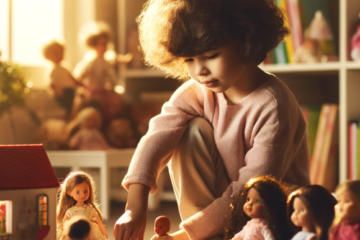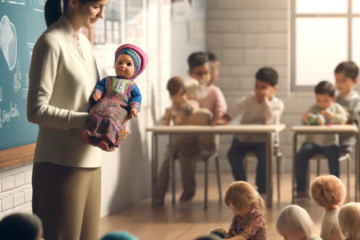In the whimsical world of childhood, dolls often occupy a significant place, serving as companions, confidantes, and mirrors of imagination. Yet beyond their role in play, dolls wield a profound influence on children’s psychological development, particularly in shaping their self-esteem. From cherished companionship to avenues of self-expression, the impact of dolls on a child’s sense of self cannot be overstated.
Companionship and Emotional Support
For many children, dolls are more than mere toys; they are cherished companions with whom they share their joys, sorrows, and secrets. In moments of solitude or distress, a doll’s reassuring presence can offer comfort and solace, providing a safe space for emotional expression and exploration. Through nurturing their dolls, children develop empathy, compassion, and a sense of responsibility, fostering emotional intelligence crucial for healthy relationships and self-perception.
Mirror of Identity
Dolls serve as mirrors reflecting children’s perceptions of themselves and the world around them. From diverse skin tones and body shapes to varying abilities and cultural backgrounds, dolls offer a spectrum of identities for children to identify with and aspire to. By seeing themselves represented in their toys, children cultivate a positive self-image and a sense of belonging, fostering pride in their individuality and diversity.
Vehicle for Self-Expression
Through imaginative play, children project their thoughts, feelings, and desires onto their dolls, using them as vessels for self-expression and exploration. Whether enacting everyday scenarios or fantastical adventures, children imbue their dolls with their own personalities, aspirations, and struggles, allowing them to navigate and make sense of their inner world. In this process, children develop self-awareness, creativity, and problem-solving skills, empowering them to navigate life’s challenges with confidence and resilience.
Cultural and Societal Influences
However, the impact of dolls on children’s self-esteem is not devoid of societal and cultural influences. Traditional notions of beauty, gender roles, and social status perpetuated by media and marketing can seep into children’s perceptions through their toys, shaping their ideals and expectations of themselves and others. Thus, the representation of diversity and inclusivity in doll design becomes paramount, ensuring that all children feel seen, valued, and empowered.
Conclusion
In the tapestry of childhood, dolls emerge as powerful catalysts in shaping children’s self-esteem and identity. From fostering companionship and emotional support to serving as mirrors of diversity and avenues of self-expression, dolls play a multifaceted role in nurturing the psychological well-being of children. As stewards of children’s development, it is incumbent upon us to ensure that dolls not only reflect the richness and diversity of the world but also empower children to embrace and celebrate their unique selves. By doing so, we cultivate a generation of confident, resilient individuals who are unafraid to dream, explore, and embrace the boundless possibilities of their own potential.



0 Comments